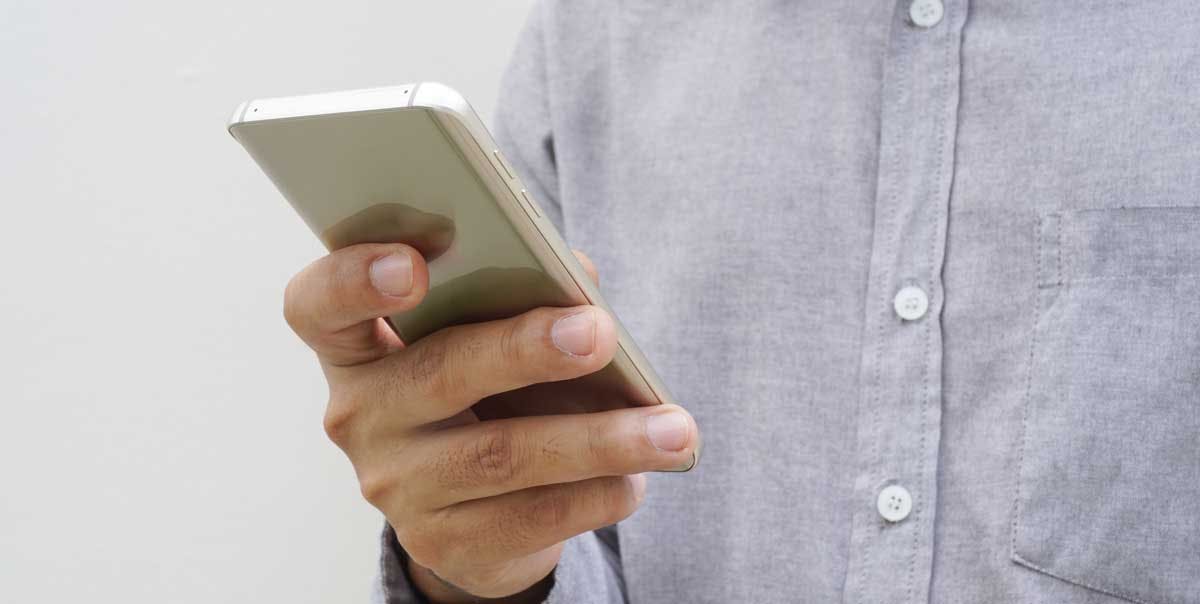Downgrade Your Smartphone to Upgrade Your Motivation?
Romy Ribitzky
By Nacie Carson, Contributor to Yesware
For many professionals, it is hard to imagine a working world without their Smartphone. The iPhone, Android, and others have changed the way we communicate and connect with clients, prospects, and colleagues, making virtually everyone accessible at any time.
Find out when your emails are being read on mobile (and desktop) so you know when to send them.
What Has Your Smartphone Done to Your Motivation?
I asked myself this very question earlier this year, after examining my productivity and engagement with work. I had come to the disappointing conclusion that both were subpar, and my work relationships and reputation were starting to suffer as a result.
What was the problem? I examined my commitment and found no issue there. I reflected on my relationship with my colleagues and clients, but also didn’t see a problem. I wasn’t feeling burnt out, and I even had a full physical workup in an attempt to ferret out the root cause …but nothing.
The answer hit me on a random Tuesday afternoon as I waited for the Red Line train at Boston’s South Station. Standing on the platform, I immediately grabbed for my iPhone and started puttering around online. Checked Facebook and Twitter (for the 10th time that morning). Read the news headlines (I had just finished my newspaper). And just as I was connecting to PerezHilton.com (…really?) I realized that something was very wrong.
In the days before Smartphones, I would spend a moment like this—alone, unoccupied, unrushed—thinking about my work product, my work relationships, and my vision for my professional future. A moment just like that, whether it was washing the dishes, waiting for something or someone, or having my first cup of coffee in the morning, was often when I’d be most creative, most motivated to re-engage. Essentially, it was these precious moments of doing nothing or performing seemingly meaningless tasks that would ground me and reroute me back to the professional path I’m on.
But since I’ve been tethered to my Smartphone, these moments of internal quiet and reflection had been replaced with online activities that often feel productive, but are actually just busywork.
I resolved to resist the siren call of reaching for my phone in the odd, unoccupied spaces during the day. But in spite of myself I couldn’t help but bring it out—just for a minute, I’d tell myself—to check something specific. Our culture around Smartphones didn’t help my restraint either. Everyone is constantly heads down in their devices constantly, all you have to do is walk around the streets, get on public transportation, wait at the doctor’s office, or sit in a movie theater before the show starts for proof.
Additionally, my inner circle of friends and family all had cultivated that slightly annoying habit of placing their Smartphone of choice on the table next to them at the start of a meal, so that no text message, email, or status update alert could go unmissed—even for the sixty minutes we’re eating together. Today, this strikes me as odd and even a bit offensive; no one I know is a doctor, policeman, or Batman, so what is so urgent they need to be on call during a social visit? But at the time, all I could think about was giving my device a seat at the table as well.
How I Ended My iPhone Addiction
To end the insidious nature of the iPhone addiction, I decided to go drastic: I traded my iPhone for a boring old-school flip phone.
People still make a dumbstruck face when I tell them this—the idea that I could relinquish such a treasured entity continues to confuse them. But almost immediately after I traded the Smartphone in, I felt a sense of relief: relief from the pressure of having to be “on” and accessible all the time. A few days later that was replaced with a sense of loss and being out of the loop—I would grope in my pockets and bag, automatically looking for the slim rectangle before landing on the decidedly less sexy Motorola.
By week 2 of being iPhone free, I didn’t miss it. I still had my iPad I could bring with me if I needed to check mail, but that device didn’t hold the same power over my attention as the phone had. Little by little, my productivity and motivation improved, as the value of all those odd, solitary moments returned.
Today, I am 7 months Smartphone addiction clean. I know that this doesn’t work for everyone. Salespeople who are on the go might not be able to rely solely on a tablet plus an old-school phone combo. For them I can suggest the following: Consider whether you’re holding onto your device because you truly need it or because everyone at the office just has one and you want to conform. Can you simplify your communications life and amplify your productivity, your connections, and relationships—and therefore sell more?
As technology becomes increasingly invasive and easily integrated in our working lives, it falls to each of us to ensure we have awareness of the role devices play and the purposes they serve. I am quite sure that success in the future will be partially defined by those who can control their devices instead of being controlled by them.
We also all need a bit of technological vigilance, because those latest and greatest iPhone commercials are still very mouthwatering, even to a reformed Smartphone addict like me.
Nacie Carson is the author of The Finch Effect: The Five Strategies to Adapt and Thrive in Your Working Life and the founder of www.TheLifeUncommon.net.
Get sales tips and strategies delivered straight to your inbox.
Yesware will help you generate more sales right from your inbox. Try our Outlook add-on or Gmail Chrome extension for free, forever!
Related Articles
Ginelle DeAntonis
Casey O'Connor
Casey O'Connor
Sales, deal management, and communication tips for your inbox

